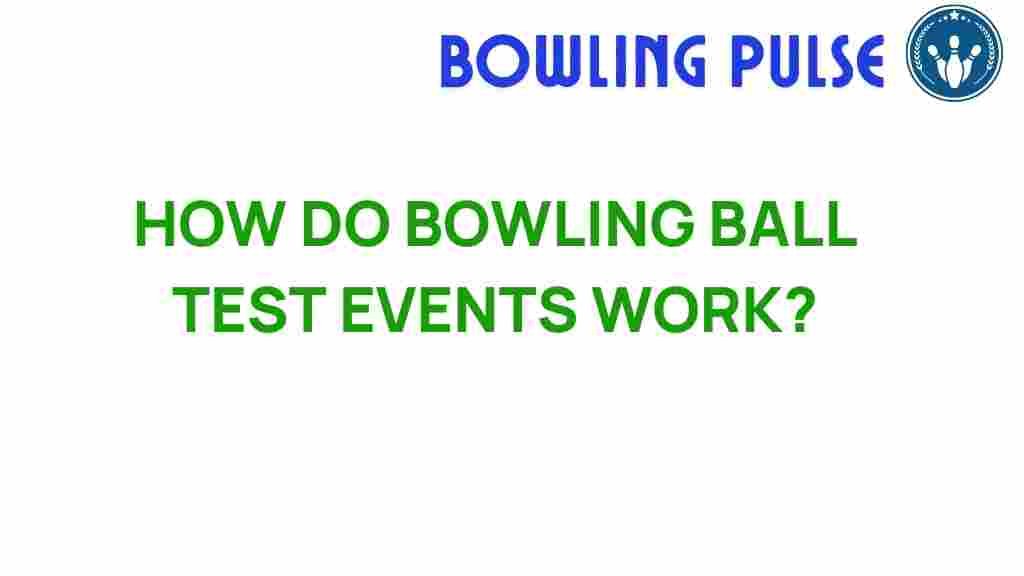Unraveling the Mystery: How Bowling Ball Test Events Work
Bowling is not just a simple pastime; it is a sport that relies heavily on precision, technique, and the right equipment. One of the most critical components of this sport is the bowling ball. Understanding how bowling ball test events work can enhance performance, ensure compliance with regulations, and elevate competitive play. In this article, we will explore the intricacies of bowling ball test events, the technology involved, and the standards that govern them.
Understanding Bowling Ball Test Events
Bowling ball test events are structured evaluations designed to assess the performance and compliance of bowling balls in competitive settings. These events are crucial for maintaining the integrity of the sport and ensuring that all players compete on a level playing field. Here’s how they typically work:
1. The Importance of Equipment Standards
Equipment in bowling, particularly the bowling ball, must adhere to specific standards set by governing bodies like the United States Bowling Congress (USBC). These standards ensure:
- Fair competition among players.
- A uniform playing experience across different venues.
- Enhanced safety for players and spectators.
Bowling ball test events evaluate various parameters, including weight, size, and material composition, to ensure compliance with these standards.
2. The Testing Procedure
Bowling ball test events generally follow a structured procedure. Here’s a step-by-step breakdown:
- Preparation: Officials gather all necessary equipment, including the bowling balls to be tested, measuring tools, and a controlled testing environment.
- Initial Inspection: Each bowling ball undergoes a visual inspection to identify any obvious defects or non-compliance with regulations.
- Measurement: The dimensions of the bowling balls, including diameter and weight, are measured using calibrated tools.
- Performance Testing: Balls are tested for performance characteristics such as hook potential, balance, and surface texture. Advanced technology, such as digital scoring systems and motion analysis, may be used during this phase.
- Data Analysis: The results from the performance tests are compiled and analyzed to determine if the bowling balls meet the required standards.
- Final Approval: Balls that pass all tests receive certification, while those that fail are either modified or disqualified.
3. Technology in Bowling Ball Testing
Modern bowling ball test events leverage advanced technology to enhance the accuracy and reliability of tests. Here are some key technologies involved:
- Digital Measurement Tools: High-precision scales and calipers are used to ensure accurate measurements of weight and size.
- Performance Analyzers: Devices that analyze the ball’s motion, including speed, spin rate, and trajectory, providing data that can be used to improve player performance.
- Software Solutions: Data management software helps in organizing test results and comparing them against regulatory standards.
The integration of technology not only streamlines the testing process but also enhances the overall accuracy of the results.
4. Troubleshooting Common Issues in Bowling Ball Testing
During bowling ball test events, various issues may arise. Here are some common problems and their solutions:
- Inconsistent Measurements: Ensure that all measuring tools are calibrated correctly before testing.
- Surface Defects: If a ball shows signs of damage, it should be set aside for further inspection and possibly repaired.
- Non-compliance with Standards: Balls that do not meet specifications should be replaced or modified. Maintain a record of modifications for future reference.
Proper training for officials conducting tests can significantly reduce the occurrence of these issues.
5. The Role of Regulations in Bowling Ball Test Events
Regulations play a pivotal role in bowling ball test events. They are established by bodies like the USBC to ensure fairness and consistency in competitive play. Key regulations include:
- Weight Limitations: Bowling balls must adhere to specific weight limits, typically between 10 to 16 pounds.
- Size Restrictions: The diameter of the balls must conform to the standard range of 8.5 inches to 8.59 inches.
- Material Standards: The materials used in bowling balls must be approved to ensure safety and performance.
Compliance with these regulations is mandatory for any bowling ball used in sanctioned events.
6. Analyzing Performance Data
After testing, the analysis of performance data is crucial for understanding how different bowling balls behave under various conditions. Here are some aspects to consider:
- Hook Potential: How much the ball curves as it travels down the lane.
- Backend Reaction: The ball’s response as it transitions from the oil to the dry part of the lane.
- Overall Consistency: The reliability of the ball’s performance across multiple throws.
This data helps bowlers choose the right equipment tailored to their playing style and lane conditions.
Conclusion
Bowling ball test events are essential for maintaining the sport’s integrity and ensuring that competitors have access to equipment that meets established standards. By understanding how these events work, the technology involved, and the importance of regulations, bowlers can make informed decisions about their equipment. Whether you are a casual player or a serious competitor, knowing the ins and outs of bowling ball testing can enhance your performance and enjoyment of the game.
For more insights on bowling equipment and performance, check out our comprehensive guide on bowling techniques. If you’re interested in the latest technology used in sports equipment testing, visit this resource for more information.
This article is in the category Equipment and created by BowlingPulse Team
